ART NEWS: March 01
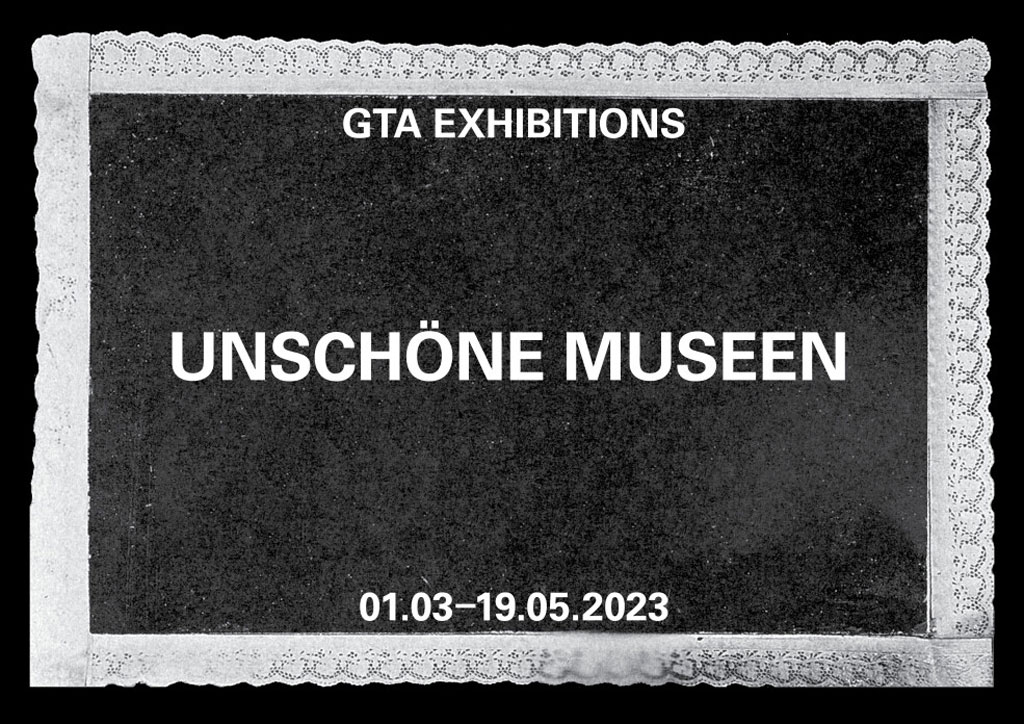 The exhibition “Unschöne Museen” draws on Benedicte Savoy’s expression “Unschöne Museen”, literally unbeautiful museums, in a selection of works that emphasize this reversal while also undoing The Museum’s camouflage. Many of the works refer to a specific museum: Onyeka Igwe’s works a so-called archive (2020) and Museum Gift Shop Postcards (2023) from the Pitt Rivers Museum in Oxford, the former Museum of British Empire and Commonwealth in Bristol and the former Nigerian Film Unit; Maud Sulter’s work MUSEUM (1990), made in response to an Orientalist painting by John Collier, when it returned from conservation to Oldham Museum; or Ilya Lipkin’s Prodromes (2019), shot at the newly reopened Museum of Modern Art, a series of glossy, fashion-editorial-like photographs mimicking The Museum’s knack for branding and spectacle. Other works propose their own definition of museum: Chris E. Vargas’ The Museum of Transgender Hirstory & Art (MOTHA), is an ongoing art project questioning the very notion of a visual representation of transgender life. And material from the gta archives addresses questions that are currently and publicly directed at the Kunsthaus Zürich – the museum that sparked this exhibition. Info: Curators: Fredi Fischli, Niels Olsen and Geraldine Tedder, gta exhibitions, Zurich, Stefano-Franscini-Platz 5, Zürich, Switzerland, Duration: 1/3-19/5/2023, Days & Hours: Mon-Fri 10:00-18:00, www.gta.arch.ethz.ch/
The exhibition “Unschöne Museen” draws on Benedicte Savoy’s expression “Unschöne Museen”, literally unbeautiful museums, in a selection of works that emphasize this reversal while also undoing The Museum’s camouflage. Many of the works refer to a specific museum: Onyeka Igwe’s works a so-called archive (2020) and Museum Gift Shop Postcards (2023) from the Pitt Rivers Museum in Oxford, the former Museum of British Empire and Commonwealth in Bristol and the former Nigerian Film Unit; Maud Sulter’s work MUSEUM (1990), made in response to an Orientalist painting by John Collier, when it returned from conservation to Oldham Museum; or Ilya Lipkin’s Prodromes (2019), shot at the newly reopened Museum of Modern Art, a series of glossy, fashion-editorial-like photographs mimicking The Museum’s knack for branding and spectacle. Other works propose their own definition of museum: Chris E. Vargas’ The Museum of Transgender Hirstory & Art (MOTHA), is an ongoing art project questioning the very notion of a visual representation of transgender life. And material from the gta archives addresses questions that are currently and publicly directed at the Kunsthaus Zürich – the museum that sparked this exhibition. Info: Curators: Fredi Fischli, Niels Olsen and Geraldine Tedder, gta exhibitions, Zurich, Stefano-Franscini-Platz 5, Zürich, Switzerland, Duration: 1/3-19/5/2023, Days & Hours: Mon-Fri 10:00-18:00, www.gta.arch.ethz.ch/
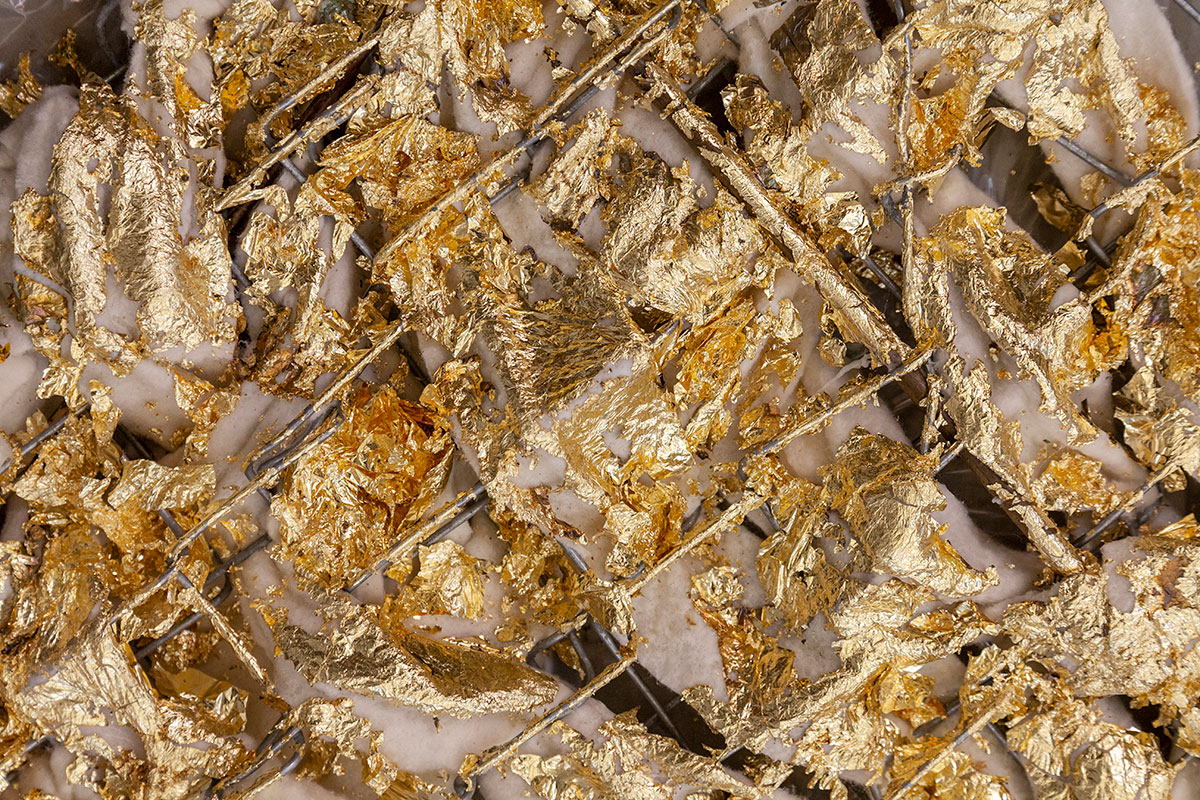 Henry Taylor presents “Nothing Change, Nothing Strange”, the result of an 18-month residency, the exhibition features an immersive sculptural environment that Taylor created through his continued exploration of painting and sculpture alongside his first experimentation with textiles. “Nothing Change, Nothing Strange”, exemplifies many of the themes that run through Taylor’s practice and investigates the boundaries that have historically divided painting and sculpture. During his residency, Taylor collaborated with the FWM studio team to assemble materials sourced from the Recycled Artists in Residency program (RAIR)––a non-profit organization focusing on the intersection of art, industry, and waste. Dissecting, merging, and mending these recycled materials has enabled Taylor to forge a previously uncharted avenue in his ever-expanding artistic process. In Nothing Change, Nothing Strange, Taylor considers the signifying potential of color and pattern, the complexity and parameters of space, and the historical persistence of oppression––illustrated by the exhibition’s very title. Info: The Fabric Workshop and Museum (FWM), 1214 Arch Street, Philadelphia, PA, USA, Duration: 2/3-23/7/2023, Days & Hours: Wed-Fri 12:00-18:00, Sat-Sun 12:00-17:00, https://fabricworkshopandmuseum.org/
Henry Taylor presents “Nothing Change, Nothing Strange”, the result of an 18-month residency, the exhibition features an immersive sculptural environment that Taylor created through his continued exploration of painting and sculpture alongside his first experimentation with textiles. “Nothing Change, Nothing Strange”, exemplifies many of the themes that run through Taylor’s practice and investigates the boundaries that have historically divided painting and sculpture. During his residency, Taylor collaborated with the FWM studio team to assemble materials sourced from the Recycled Artists in Residency program (RAIR)––a non-profit organization focusing on the intersection of art, industry, and waste. Dissecting, merging, and mending these recycled materials has enabled Taylor to forge a previously uncharted avenue in his ever-expanding artistic process. In Nothing Change, Nothing Strange, Taylor considers the signifying potential of color and pattern, the complexity and parameters of space, and the historical persistence of oppression––illustrated by the exhibition’s very title. Info: The Fabric Workshop and Museum (FWM), 1214 Arch Street, Philadelphia, PA, USA, Duration: 2/3-23/7/2023, Days & Hours: Wed-Fri 12:00-18:00, Sat-Sun 12:00-17:00, https://fabricworkshopandmuseum.org/
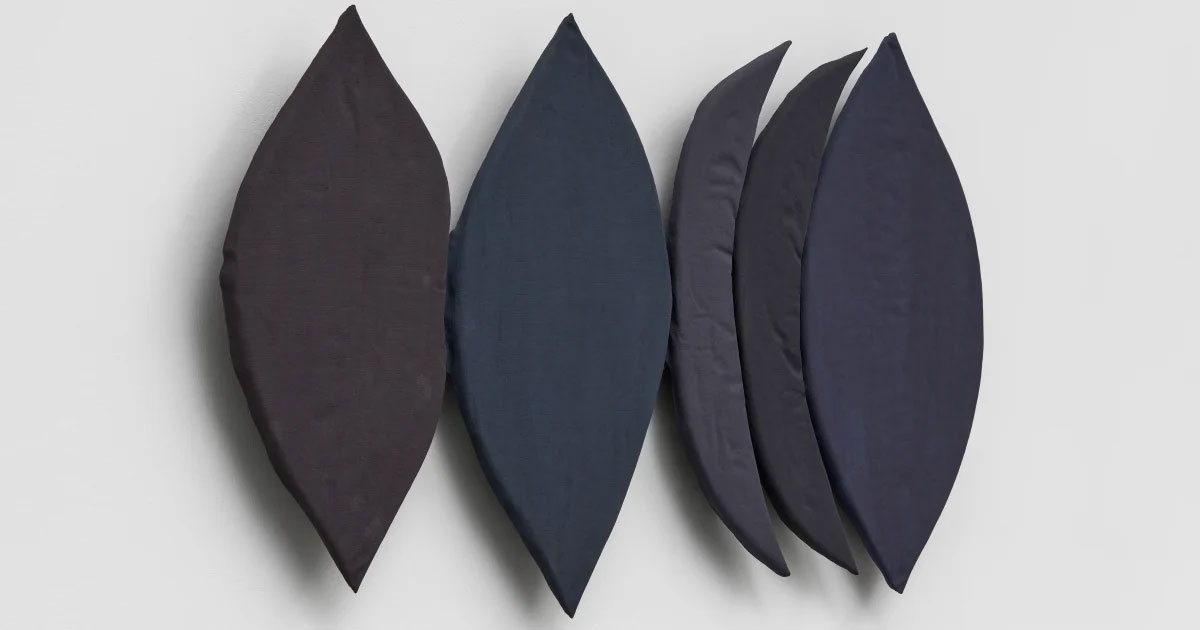 Anthony Pearson’s solo exhibition features work from his “Embedments” and “Casements” series, embodies a new chapter in his career-spanning investigation of form and material. Renowned for his inventive processes and sensitive approach to materials, Pearson has built a body of work that exudes an intimate, poetic certitude. Through ongoing experimentation with the formal and technical limits of his chosen materials, he has developed a singular visual vocabulary rooted in abstraction that interrogates the balances of positive and negative, light and dark, control and chance. Begun in 2021, the “Casements” are a continuation of Pearson’s investigation into the formal, material, and aesthetic potential of Hydrocal, an industrial gypsum cement. To produce these works, he pours pigmented Hydrocal directly into loosely constructed fabric molds, allowing the liquid cement mixture to spread within the cloth as it hardens. Once cured, Pearson peels the fabric away from the surface to reveal interlocking abstract forms and, in some instances, finishes them with Keim mineral paint, which binds mechanically to Hydrocal, staining the works in deep, rich hues. The “Casements” record the process of their creation-the moments Hydrocal meets cloth. And while the cement, by its nature, is perpetually hardening, the works nevertheless retain the softness of the textiles in which they are cured-the pattern of the fabric’s weave and the loose fibers of the cotton or linen remain visible in the cement surface. Info: Marianne Boesky Gallery, 507 West 24th Street, New York, NY, USA, Duration: 2/3-1/4/2023, Days & Hours: Tue-Sat 10:00-18:00, https://marianneboeskygallery.com/
Anthony Pearson’s solo exhibition features work from his “Embedments” and “Casements” series, embodies a new chapter in his career-spanning investigation of form and material. Renowned for his inventive processes and sensitive approach to materials, Pearson has built a body of work that exudes an intimate, poetic certitude. Through ongoing experimentation with the formal and technical limits of his chosen materials, he has developed a singular visual vocabulary rooted in abstraction that interrogates the balances of positive and negative, light and dark, control and chance. Begun in 2021, the “Casements” are a continuation of Pearson’s investigation into the formal, material, and aesthetic potential of Hydrocal, an industrial gypsum cement. To produce these works, he pours pigmented Hydrocal directly into loosely constructed fabric molds, allowing the liquid cement mixture to spread within the cloth as it hardens. Once cured, Pearson peels the fabric away from the surface to reveal interlocking abstract forms and, in some instances, finishes them with Keim mineral paint, which binds mechanically to Hydrocal, staining the works in deep, rich hues. The “Casements” record the process of their creation-the moments Hydrocal meets cloth. And while the cement, by its nature, is perpetually hardening, the works nevertheless retain the softness of the textiles in which they are cured-the pattern of the fabric’s weave and the loose fibers of the cotton or linen remain visible in the cement surface. Info: Marianne Boesky Gallery, 507 West 24th Street, New York, NY, USA, Duration: 2/3-1/4/2023, Days & Hours: Tue-Sat 10:00-18:00, https://marianneboeskygallery.com/
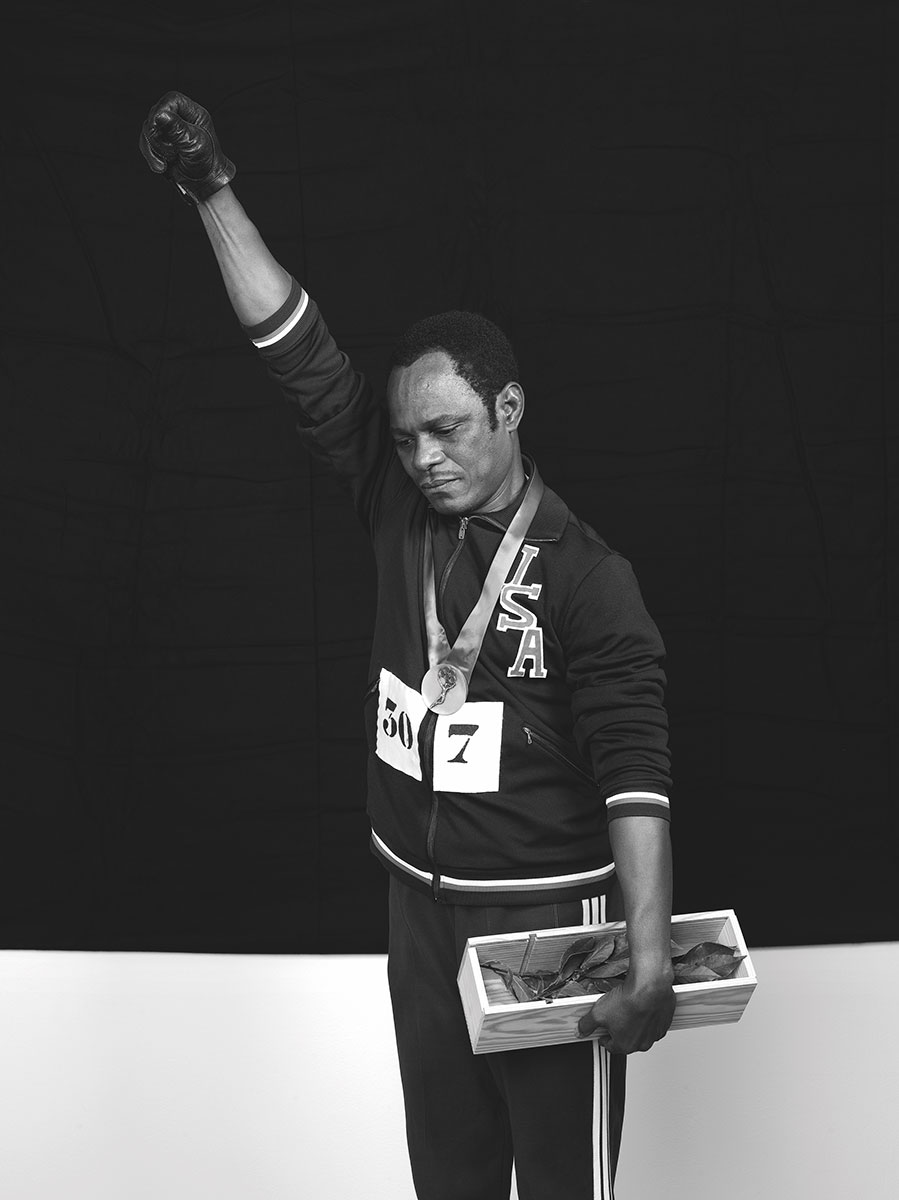 The Photographers’ Gallery presents the 2023 edition of the Deutsche Börse Photography Foundation Prize. The exhibition features work by the four international shortlisted artists: Bieke Depoorter, Samuel Fosso, Arthur Jafa and Frida Orupabo. This year’s shortlisted artists all push the boundaries of photography and exemplify its resonance and relevance as a cultural force today. The complex ethical relationship and boundaries which have rarely been explored between the photographer and their subject provide the focus for Bieke Depoorter’s intense scrutiny of her relationship with her subjects. Drawing upon the West African tradition of studio portraiture, Samuel Fosso repurposes this genre through self-portraiture by creating startling new identities, based on social archetypes as well as real historical figures. Drawing from a rich collection of images, film footage and music, Arthur Jafa uncompromisingly articulates Black experience, providing us with an exercise in visual literacy, confronting us with a new Black aesthetic which avoids fixed hierarchies and linear storytelling. Giving sculptural form to photo collage, Frida Orupabo reimagines the historical Black female body through her extraordinary multi-layered collages and Instagram posts using material circulated online. Info: The Photographer’s Gallery, 16-18 Ramillies St, London, United Kingdom, Duration: 3/3-11/6/2023, Days & Hours: Mon-Wed & Sat 10:00-18:00, Thu-Fri 10:00-20:00, Sun 11:00-18:00, https://thephotographersgallery.org.uk/
The Photographers’ Gallery presents the 2023 edition of the Deutsche Börse Photography Foundation Prize. The exhibition features work by the four international shortlisted artists: Bieke Depoorter, Samuel Fosso, Arthur Jafa and Frida Orupabo. This year’s shortlisted artists all push the boundaries of photography and exemplify its resonance and relevance as a cultural force today. The complex ethical relationship and boundaries which have rarely been explored between the photographer and their subject provide the focus for Bieke Depoorter’s intense scrutiny of her relationship with her subjects. Drawing upon the West African tradition of studio portraiture, Samuel Fosso repurposes this genre through self-portraiture by creating startling new identities, based on social archetypes as well as real historical figures. Drawing from a rich collection of images, film footage and music, Arthur Jafa uncompromisingly articulates Black experience, providing us with an exercise in visual literacy, confronting us with a new Black aesthetic which avoids fixed hierarchies and linear storytelling. Giving sculptural form to photo collage, Frida Orupabo reimagines the historical Black female body through her extraordinary multi-layered collages and Instagram posts using material circulated online. Info: The Photographer’s Gallery, 16-18 Ramillies St, London, United Kingdom, Duration: 3/3-11/6/2023, Days & Hours: Mon-Wed & Sat 10:00-18:00, Thu-Fri 10:00-20:00, Sun 11:00-18:00, https://thephotographersgallery.org.uk/
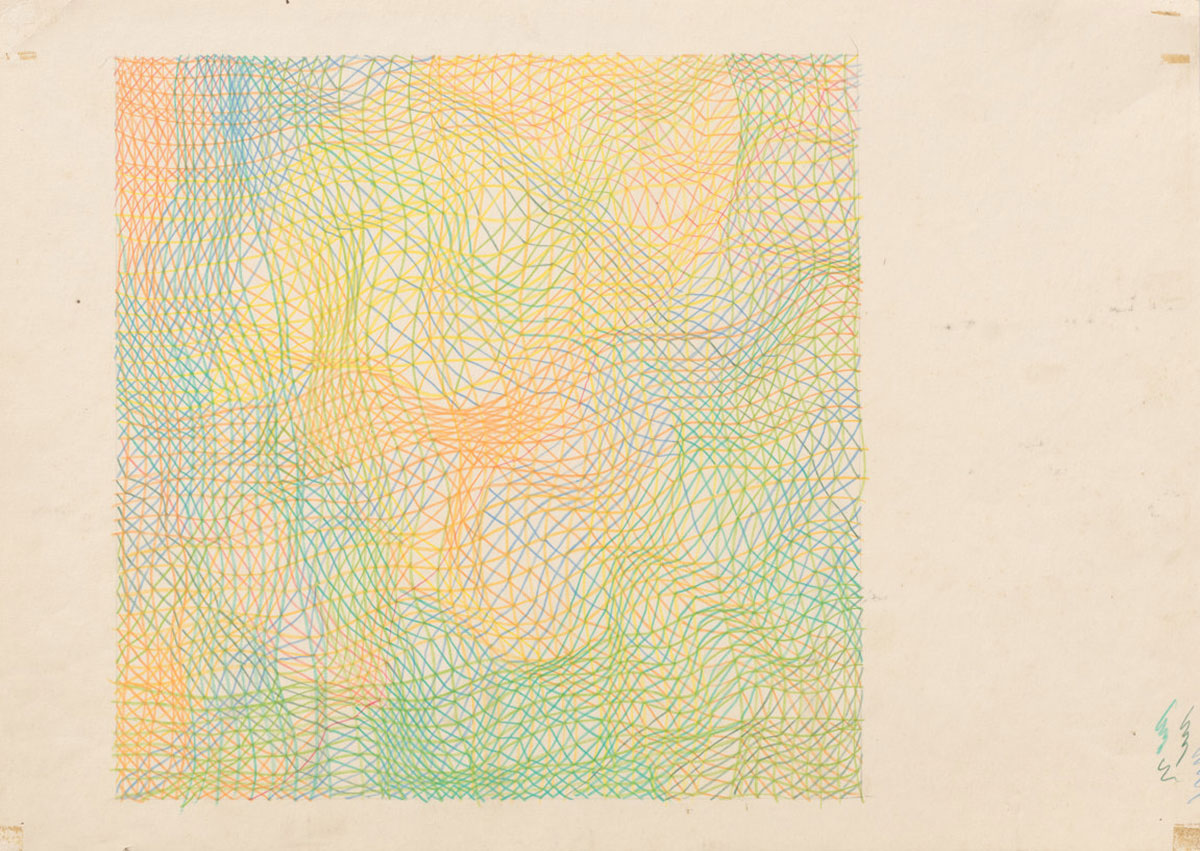 The selected works by Stefan Bertalan exhibited in “Ends of Research” are taken from different series across Bertalan’s entire career. They display the discontinuities but also the striking continuum of a career balanced between the earlier ends of his scientific-like research (the geometric, abstract perfection of shapes and objects), and the later ends of his psycho-political, manic research in which he projected himself (as self-portrait) into the biological-cosmic-fantastic world around him. Ends of Research shows how the research of abstract structures slowly opens towards the figures of the outer world and subsequently unfold into research of his own human traits, which then develop into research of his body, but one whose anatomy progresses into geology and cosmology. Bertalan’s extensive research papers are filled with sketches, diagrams and complex calculations, geometric schemes, keen observations of plants, rocks, shells, insects, animals, landscapes, but also abstract structures, nightmarish monsters and violent politics. They re-construct earth and skies, nature, human faith, and ethics. Inspired by pioneering work in systems theory and bionics, he investigated the formal relationships between organic and inorganic natural structures, human artifacts, and spiritual visions. Info: Curator: Erwin Kessler, Esther Schipper Gallery, Potsdamer Straße 81E, Berlin, Germany, Duration: 3/3-8/4/2023, Days & Hours: Tue-Sat 11:00-18:00, www.estherschipper.com/
The selected works by Stefan Bertalan exhibited in “Ends of Research” are taken from different series across Bertalan’s entire career. They display the discontinuities but also the striking continuum of a career balanced between the earlier ends of his scientific-like research (the geometric, abstract perfection of shapes and objects), and the later ends of his psycho-political, manic research in which he projected himself (as self-portrait) into the biological-cosmic-fantastic world around him. Ends of Research shows how the research of abstract structures slowly opens towards the figures of the outer world and subsequently unfold into research of his own human traits, which then develop into research of his body, but one whose anatomy progresses into geology and cosmology. Bertalan’s extensive research papers are filled with sketches, diagrams and complex calculations, geometric schemes, keen observations of plants, rocks, shells, insects, animals, landscapes, but also abstract structures, nightmarish monsters and violent politics. They re-construct earth and skies, nature, human faith, and ethics. Inspired by pioneering work in systems theory and bionics, he investigated the formal relationships between organic and inorganic natural structures, human artifacts, and spiritual visions. Info: Curator: Erwin Kessler, Esther Schipper Gallery, Potsdamer Straße 81E, Berlin, Germany, Duration: 3/3-8/4/2023, Days & Hours: Tue-Sat 11:00-18:00, www.estherschipper.com/
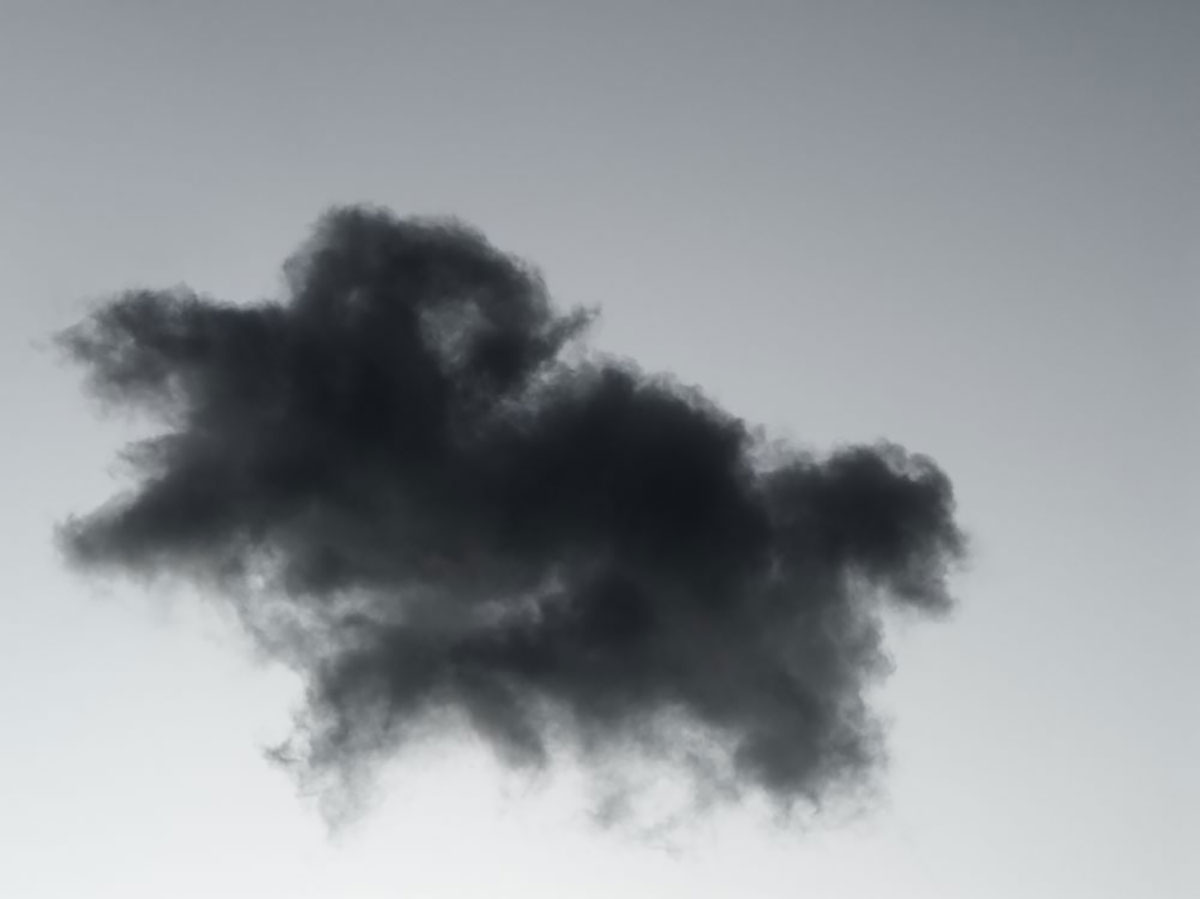 Manuela Marques, in her new solo exhibition “Aftershock” presents a new set of photographs and a video. During extended stays in the Azores archipelago, Manuela Marques focused on the region’s volcanic dimension, immersing herself in it through work carried out with various scientific seismic observation institutions. What matters above all is the energy at work there, its fervor, and how it tests the beings who inhabit the rugged, complex coastline. The artist described the sensations and tremors as she listened to the seismic faults. Thus, what Marques seeks first and foremost, as she says, is “to be as fair as possible with nature”. This accuracy is that of an eye that takes up the cause of that which it covets and puts itself in the place of that which it observes without verticality or anthropocentrism. It is about co-presence in the world, which includes remaining at a fair distance and paying attention to the infinitesimal, the idiosyncratic and, of course, the invisible. Info: Galerie anne barrault, 51 rue des Archives, Paris, France, Duration: 4/-15/4/223, Days & Hours: Tue-Sat 11:00-19:00, https://galerieannebarrault.com/
Manuela Marques, in her new solo exhibition “Aftershock” presents a new set of photographs and a video. During extended stays in the Azores archipelago, Manuela Marques focused on the region’s volcanic dimension, immersing herself in it through work carried out with various scientific seismic observation institutions. What matters above all is the energy at work there, its fervor, and how it tests the beings who inhabit the rugged, complex coastline. The artist described the sensations and tremors as she listened to the seismic faults. Thus, what Marques seeks first and foremost, as she says, is “to be as fair as possible with nature”. This accuracy is that of an eye that takes up the cause of that which it covets and puts itself in the place of that which it observes without verticality or anthropocentrism. It is about co-presence in the world, which includes remaining at a fair distance and paying attention to the infinitesimal, the idiosyncratic and, of course, the invisible. Info: Galerie anne barrault, 51 rue des Archives, Paris, France, Duration: 4/-15/4/223, Days & Hours: Tue-Sat 11:00-19:00, https://galerieannebarrault.com/
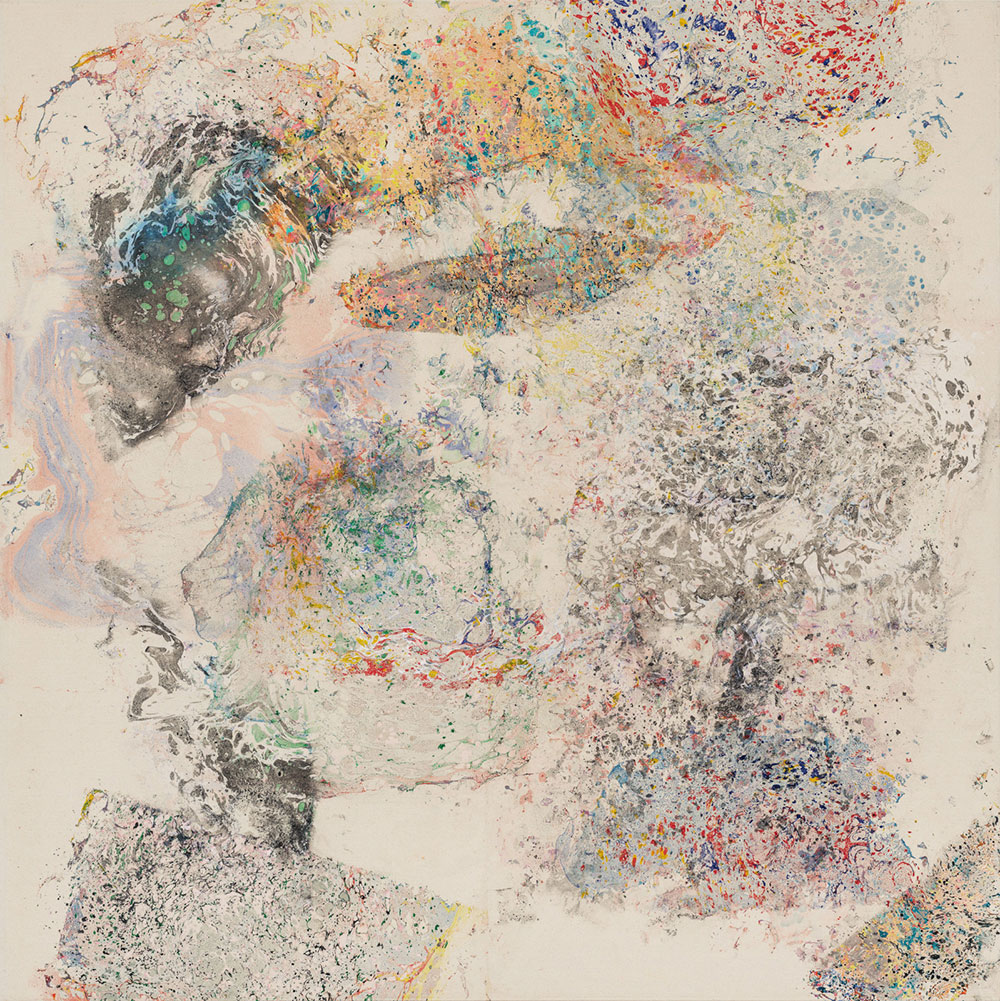 Dan Rees presents new works in his solo exhibition “Aleatory Compensatory”. In these works, Rees uses the techniques of marbling often associated with children’s art, hobbyist art, and artisanal bookmaking. Due to the aleatory nature of marbling as a technique itself, the visual outcome of the works is both highly individuated and contains a degree of unpredictability. For this new body of works the artist has used various marbling techniques directly onto canvas creating a range of effects, these variations are further informed by the different types of canvas and linen and the manner in which the material is folded in preparation. The works themselves have been conceived of as four constellations and will be arranged as such within the exhibition. ‘Aleatory Compensatory’ continues Rees’ ongoing interest in the relationship between conceptual art and aesthetics, and in subtle subversions of artistic hierarchies between art’s linguistic character and the desire for affect. Info: Tanya Leighton Gallery, Kurfürstenstraße 24/25, Berlin, Germany, Duration: 4/3-15/4/2023, Days & Hours: Tue-Sat 11:00-18:00, www.tanyaleighton.com/
Dan Rees presents new works in his solo exhibition “Aleatory Compensatory”. In these works, Rees uses the techniques of marbling often associated with children’s art, hobbyist art, and artisanal bookmaking. Due to the aleatory nature of marbling as a technique itself, the visual outcome of the works is both highly individuated and contains a degree of unpredictability. For this new body of works the artist has used various marbling techniques directly onto canvas creating a range of effects, these variations are further informed by the different types of canvas and linen and the manner in which the material is folded in preparation. The works themselves have been conceived of as four constellations and will be arranged as such within the exhibition. ‘Aleatory Compensatory’ continues Rees’ ongoing interest in the relationship between conceptual art and aesthetics, and in subtle subversions of artistic hierarchies between art’s linguistic character and the desire for affect. Info: Tanya Leighton Gallery, Kurfürstenstraße 24/25, Berlin, Germany, Duration: 4/3-15/4/2023, Days & Hours: Tue-Sat 11:00-18:00, www.tanyaleighton.com/
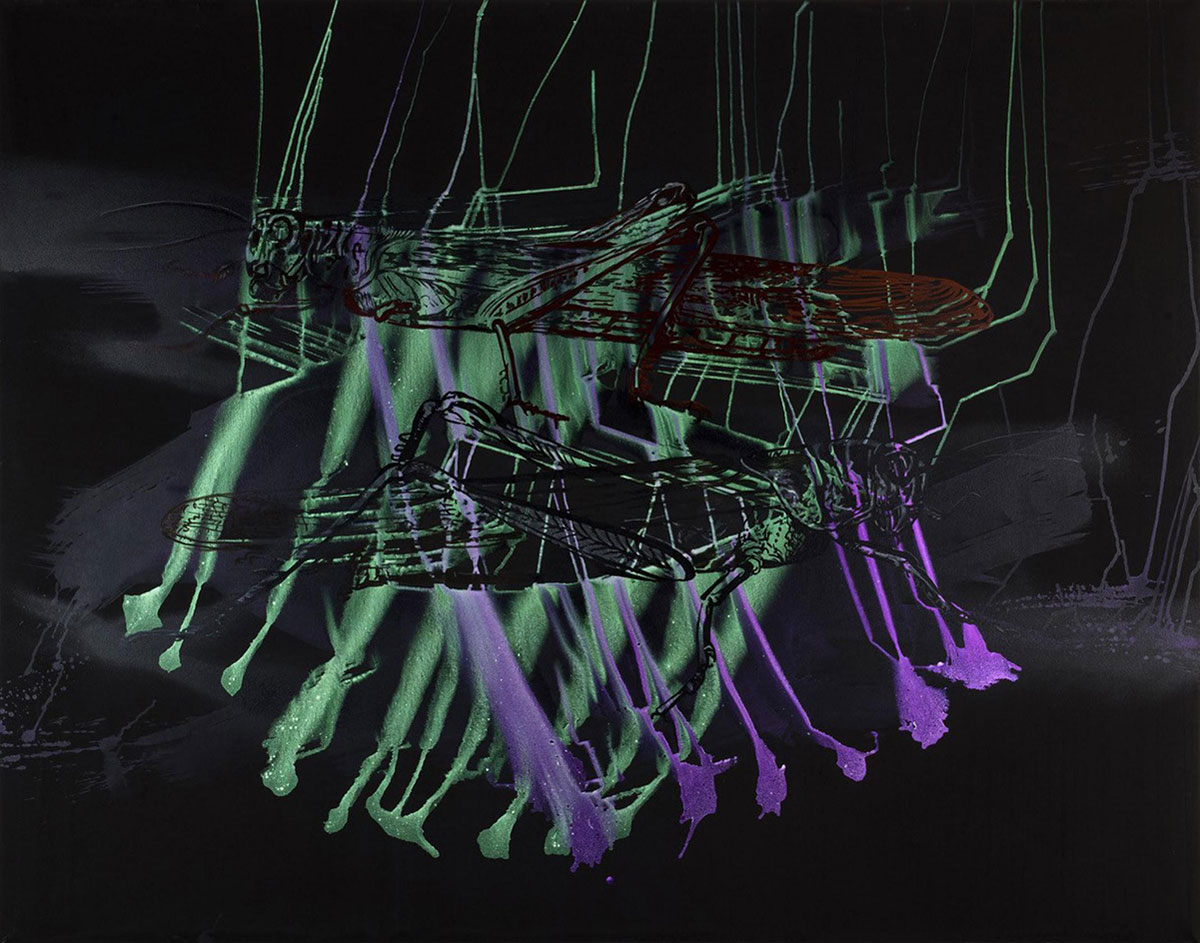 The exhibition “NO ILLUSIONS” will explore the properties and limits of the medium of painting based on diverse contemporary positions. Some of the featured works by the four invited artists are being created expressly for the show. Painting was for centuries the medium of choice when striving to capture true-to-life, three-dimensional impressions of people, nature and objects on a flat surface. And yet painting has not always been a matter of creating an illusion. Artists have instead continually explored its limits for representing reality, constantly putting it to the test. As a consequence, painting has always been »abstract« and also inevitably »conceptual«. At the same time, it is always oriented toward the space around it as well as those who encounter it. The role of the audience viewing a picture is thus every bit as important as that of the artists who produce it. While the latter invent images, it is the viewers who carry them out into the world. Museums, as places of collective pictorial memory, are often the places that make it possible to present works of art to a large audience for the first time. In doing so, they not only create a stage but may also act as muse. Info: Curator: Dr. Alexander Klar and Ifee Tack, Hamburger Kunsthalle, Glockengießerwall 5, Hamburg, Germany, Duration: 31/3-31/10/2023, Days & Hours: Tue-Wed & Fri-Sun 10:00-18:00, Thu 10:00-21:00, www.hamburger-kunsthalle.de/
The exhibition “NO ILLUSIONS” will explore the properties and limits of the medium of painting based on diverse contemporary positions. Some of the featured works by the four invited artists are being created expressly for the show. Painting was for centuries the medium of choice when striving to capture true-to-life, three-dimensional impressions of people, nature and objects on a flat surface. And yet painting has not always been a matter of creating an illusion. Artists have instead continually explored its limits for representing reality, constantly putting it to the test. As a consequence, painting has always been »abstract« and also inevitably »conceptual«. At the same time, it is always oriented toward the space around it as well as those who encounter it. The role of the audience viewing a picture is thus every bit as important as that of the artists who produce it. While the latter invent images, it is the viewers who carry them out into the world. Museums, as places of collective pictorial memory, are often the places that make it possible to present works of art to a large audience for the first time. In doing so, they not only create a stage but may also act as muse. Info: Curator: Dr. Alexander Klar and Ifee Tack, Hamburger Kunsthalle, Glockengießerwall 5, Hamburg, Germany, Duration: 31/3-31/10/2023, Days & Hours: Tue-Wed & Fri-Sun 10:00-18:00, Thu 10:00-21:00, www.hamburger-kunsthalle.de/
